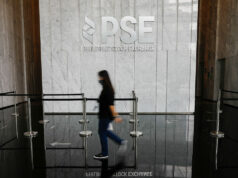Nuclear power possible by 2027, Energy dep’t says
NUCLEAR ENERGY could be helping power the grid by 2027 at the earliest, according to the Department of Energy (DoE).
“Gumawa po ng study ang DoE, in the year 2030, pwede na ipasok ang nuclear power in the energy mix (The DoE prepared a study which found that nuclear power can enter the energy mix in 2030),” Energy Assistant Secretary Gerardo D. Erguiza, Jr. said, referring to the findings under the Philippine Energy Plan.
However, under an optimistic scenario, nuclear power could be launched “as early as 2027,” he said.
At a virtual industry gathering Saturday, Energy Secretary Alfonso G. Cusi declared that the “time is ripe” for the Philippines to pursue nuclear power.
“The DoE considers nuclear energy as a long-term energy option and part of its strategy to address energy security through the diversification of energy sources,” he said in a message read by Mr. Erquiza.
President Rodrigo R. Duterte in an executive order issued in July ordered an inter-agency body led by the DoE to determine the viability of nuclear power and review current policy.
Mr. Cusi in August told reporters that he expects the government to adopt a national position on nuclear energy by the end of 2020.
The fastest way to reintroduce nuclear power is by reviving the mothballed 621-megawatt Bataan Nuclear Power Plant (BNPP), which the president also ordered to be reviewed, according to Carlo A. Arcilla, director of the Philippine Nuclear Research Institute of the Department of Science and Technology.
“Pag binuksan ang BNPP, $1 billion lang ang cost. Two-three years na operation, mababawi na ang cost of importation dahil sa coal savings (If the BNPP becomes operational, it will cost $1 billion. That will pay back after two or three years from the savings on importing coal),” Mr. Arcilla said at the same event.
He noted that around $6 billion is needed to build new baseload nuclear facilities.
No new nuclear plants are expected to come online over the next decade due to the high capital costs and safety considerations, analysts said.
“We maintain our forecast that no nuclear capacity will come online in the country over the coming decade, and will only seek to revise it if we see concrete project developments going forward,” Fitch Solutions Country Risk and Industry Research said in a recent commentary.
Meanwhile, Mr. Erquiza said it was important to lay down the legislative and regulatory frameworks to attract investors. At present, six measures on nuclear power are pending in various House committees, while an old Senate bill has yet to be refiled.
Alpas Pinas, a group of nuclear energy advocates, expressed the hope that Senator Ralph G. Recto, who joined the conference, will help refile the measure.
“To ensure that when planning out our energy needs, nuclear should be included as soon as possible. It takes a decade to build a plant, maybe even longer, and we have to start immediately,” Mr. Recto said.
The Philippines is close to fulfilling the 19 requirements prescribed by the International Atomic Energy Agency for countries seeking to develop nuclear energy, Mr. Cusi has said. — Adam J. Ang



